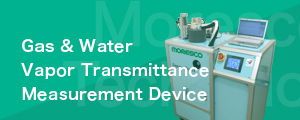Hydraulic fluid: FAQs
- What are the key points to consider regarding the suction filters when using water-glycol hydraulic fluid?
- • Ensure that the suction resistance is 120 × 102 Pa (90 mmHg) or less.
• It is desirable that the design has a filtering capacity that is 1.5 to 2 times the suction flow rate of the pump.
• Stainless steel is the most suitable material. - What are the key points to consider regarding the pump when using water-glycol hydraulic fluid?
- The fluid can be used on standard single-stage (7 MPa) or double-stage (14 MPa) vane pumps, single-stage high-pressure vane pumps (14 MPa), internal gear pumps (21 MPa) and axial piston pumps (21 MPa).
Please consult each hydraulic equipment manufacturer for the details of the design. - What are the key points to consider regarding the liquid level gauge when using water-glycol hydraulic fluid?
- • The material should be an inorganic material such as glass whenever possible.
• When it is necessary to use synthetic resin, please use either acrylic, vinyl chloride or polypropylene that has been shaped by machining.
• Polycarbonate resin should be avoided as it may crack. - What are the key points to consider regarding oil tank and paint when using water-glycol hydraulic fluid?
- • Do not coat the inside of the fluid tank.
• Either a vinyl resin or epoxy resin coating is suitable for the coating of the outer surface of the hydraulic equipment body, but these cannot be expected to have long-term durability.
• Except for the air breather, the liquid tank should be kept in a sealed state as much as possible.
• Install a cooling device to keep the fluid temperature to 50°C or lower. - What are the key points to consider regarding hydraulic system seals, hoses and accumulators when using water-glycol hydraulic fluid?
- • Avoid using water absorptive materials such as leather, cork and paper.
• Nitrile rubber is appropriate under normal conditions of use. If relatively high temperatures will be reached, then EP rubber is appropriate. (However, EP rubber is not appropriate for mineral oil.)
• Avoid using urethane.
• We recommend the use of high pressure hoses with water-glycol hydraulic fluid specifications. - What are the key points to consider regarding the metal materials of the hydraulic system when using water-glycol hydraulic fluid?
- Avoid using zinc, zinc-plating, cadmium and cadmium-plating because these generate deposits.
Avoid magnesium because it will corrode.
Avoid aluminum because long-term use and contact with other metals can lead to pitting and electrolytic corrosion. - What is the method for flushing?
- • Remove the previous oil as completely as possible and then perform sufficient flushing with a dedicated flushing fluid or with new fire-resistant hydraulic fluid. After the flushing operation, remove as much of the fluid used in the flushing as possible.
• We recommend that sufficient flushing is performed when installing new equipment, and when switching from a mineral oil hydraulic fluid or other fire-resistant hydraulic fluid. If flushing is not performed at this time, or if no flushing fluid is used, then this can be a cause of poor performance or the generation of insoluble substances.
• The flushing method will vary depending on the oil type used previously, so please contact MORESCO for details. MORESCO can also provide dedicated flushing fluid for leasing. - What is the usage temperature range for water-glycol hydraulic fluid?
- Hydraulic machinery is designed to maintain the temperature of the hydraulic fluid within an appropriate range (approx. 40 to 50°C). For HYDOL HAW in particular, as the product contains about 40% water, pay sufficient attention to the temperature of the hydraulic tank and ensure that it does not exceed 50°C.
- What are the usage standards for HYDOL HAW?
- • We have set the following usage standards to ensure that the product can be used in its optimal state.
Appearance: Red
Dynamic viscosity: 46.0 - 56.0
Moisture content (%): 37 - 43
Alkali value: 130 - 165
pH: 9.0 - 11.0
Mineral oil content: Less than 1%
• In order to keep the hydraulic fluid within these standards, it is necessary to add supplementary water and the specified alkali value modifying agent when the fluid used falls below the separately defined adjustment standards.
• The standards that must be managed will vary depending on factors such as the design conditions and usage conditions. However, if adjustments are made after analysis is performed, but it is still impossible to maintain the usage standards set, then it is necessary to change the fluid. - What are the causes and effects of changes in the moisture content of water-glycol hydraulic fluid?
- A decrease in the moisture content is caused by the evaporation of the moisture.
When the moisture content becomes low, problems may occur due to the reduced flame retardancy and increased dynamic viscosity. The possible problems include energy loss, pressure loss, reduced mechanical efficiency and cavitation.
An increase in the moisture content can be caused by the adding of too much supplementary water, or by the mixing in of moisture from the outside for reasons such as cooler damage.
The dynamic viscosity falls if the moisture content is too high, so this can cause problems such as an increase in wear due to reduced lubrication performance, a decrease in efficiency due to leaks inside the pump, and difficulty performing precise control. - What are the causes and adjustment methods for changes in the dynamic viscosity of water-glycol hydraulic fluid?
- There are two conceivable causes of dynamic viscosity changes.
1. A change in the dynamic viscosity due to a change in the moisture content
If the moisture content has decreased, then follow the instructions on the lubrication control chart and add supplementary moisture.
If the moisture content has increased, then there is a risk that problems may occur, so please consult the MORESCO sales staff.
2. A decrease in the dynamic viscosity due to deterioration
Adjustments are difficult in this case. If the values do not satisfy the management standards, then it is necessary to replace the hydraulic fluid. - What is the supplementary water?
- The water contained in the hydraulic fluid will slowly evaporate, even when at room temperature. It is necessary to replenish the water in accordance with the usage situation. The water to be added should be distilled water, deionized water or condensed water from the boiler and it should not contain any contamination.
- How should the filter be maintained and managed?
- • This will vary slightly depending on the usage situation and the ambient atmosphere, but it is necessary to inspect filters at least once every month.
During the inspection, remove the filter and wash it well with hot or cold water.
• Avoid the mixing in of oil and fat components such as mineral oil and grease whenever possible. These react with the additive agents of the water-glycol and generate a sludge of insoluble substances that can cause clogging of the filter. If the inclusion of these components is unavoidable, then perform removal work periodically to ensure that the concentration of the oil and fat components such as mineral oil and grease is kept below 1%. - How should the water-glycol hydraulic fluid be inspected?
- • When starting operations using water-glycol type hydraulic fluid, in general an inspection is implemented once every 2 to 4 months (1,500 to 3,000 hours), depending on the usage conditions.
• MORESCO will analyze the inspection sample and report the results in a "Lubricating Oil Management Test Results Report."







